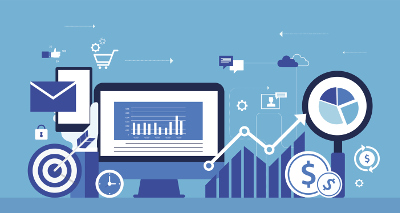
The modern world runs on data. It's become ubiquitous in every field from science to retail. Most people who use scales and balances record results. Sometimes it's as informal as remembering a child's weight, or it can be part of a formal lab report with specific data included to ensure traceability or to conform to legal norms. We've come a long way from jotting down the weight on a piece of paper.
Adam scales have an RS-232 port, and some models have a USB port as well. Some balances have a print button that allows users to send data to computers. Users can simply send the data to a spreadsheet, or use specific software like Adam DU to create graphs or other visual representations.

Common data transmission settings on Adam balances
To start transmitting data to a computer or printer, you have to connect the cables (USB or RS-232) to the computer or printer. From there, you'll have a few options to choose from. The following settings of data transmission are the most common in Adam balances:
- Continuous:
- Transmits the weight data in a continuous way
- Manual or On Demand:
- balances outputs data when the PRINT button is pressed or a PRINT command is sent to the balance from a computer.
- Periodic:
- user can set a time interval in seconds for the balance to output data
- On Stability:
- the balance automatically outputs data as soon as the reading is stable. It needs to return to zero first before it will do it again.
Data transmission will differ depending on the scale or balance used
Different balances have different data that can be saved and transmitted. For example, an analytical balance will typically have more fields. A counting scale will have a field for the number of pieces counted, but a moisture analyzer wouldn't. Ultimately, it's up to the user to decide which data is necessary, and what can be omitted for the sake of brevity.

Which types of data can be transmitted?
Electronic weighing instruments have multiple relevant fields. The time and the date are important for traceability. The weight results are recorded. Other results that can be recorded include things like the piece count, weight in percentage, recipes and ingredients (for instruments that support them) and more.
Users can save that data for later analysis, examine it immediately, plug it in a variety of software (like Excel or Adam DU) or print it. Having all that information sent directly from the balance can minimize human error that may occur if someone manually records the data. It also speeds up the gathering of results; the balance can instantly include things like the date, the time, the model number, the ID of the instrument, and other important data points. That allows users to spend more time on their job rather than constantly having to stop and input data. Both regular operation and calibration can be documented.

Why save this data?
Lab work must be traceable and repeatable. This means that other people should be able to replicate your results using the same equipment and have access to information such as when the balance was last calibrated. It can be as simple as keeping track of what was weighed, being up to date on the last calibration, or as complex as a full analysis and peer review of the technique being used. Many industries have rules or guidelines for data keeping. Having the balance transmit the data to a computer, printer or a flash drive allows for transparency and efficiency. We have a blog post detailing GLP requirements you can read . GLP is a standard for quality and reproducibility in almost every industry where lab work is performed, and as such, we encourage you to familiarize yourself with GLPs.
Even if you're not a scientist, in our data-driven world, data communication is paramount. Inventory management and audits go much faster with extensive, well-kept records. Being able to transfer that data to a searchable database can save a lot of time and effort. Everything from shipping and receiving to manufacturing or quality control depends on information to ensure that things are working efficiently and as they should be. That data can also be used by consumer groups to monitor a recipe's changes (for example, Nutella changed their recipe so that it contains less cocoa and more milk because milk is cheaper) or checking what consumers pay for (Toblerone chocolates have the same length and packaging, but weigh less because the gaps between its triangles are slightly larger).

Sometimes, only the raw data is needed, while other times the data must be analyzed. If you monitor a patient's weight, it is important to look at the readings over the long term to see if their weight loss or gain is steady, or if it's irregular. For example, a child's weight might increase from one medical check to the next, but it may still be too low for their height. Having a scale or balance transmit the data allows professionals to spend more time analyzing it. It also help prevent human errors when the weight and other information is recorded. Data also needs to be presented. If a scientist finds out that the wolf population they monitor is losing weight consistently, they have to report their findings in a way that allows the patterns and trend to emerge from the raw data, and present it in a way that it can be explained to all interested audiences. Adam DU can help professionals find a trend, pattern or salient point in data to get the most important findings to key decision makers.
Don't hesitate to contact us for more information. The website has manuals on the product pages you can consult whenever you need.

